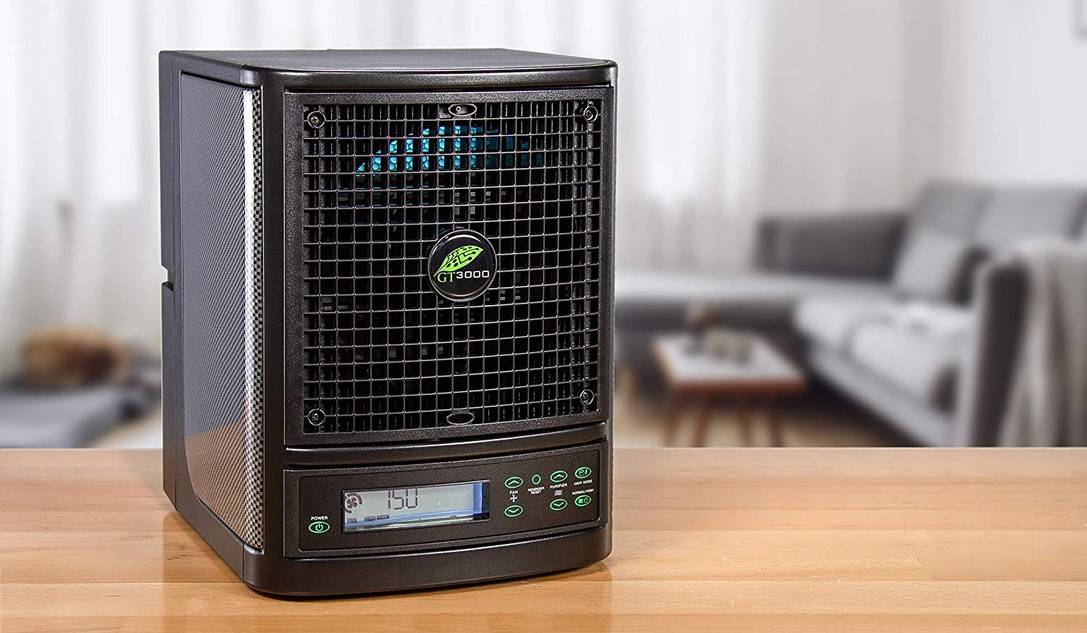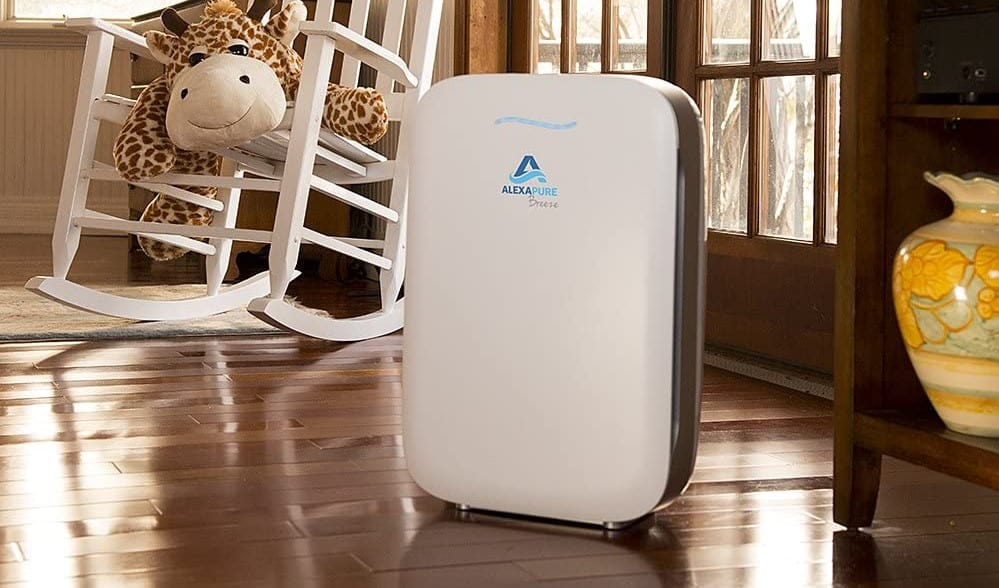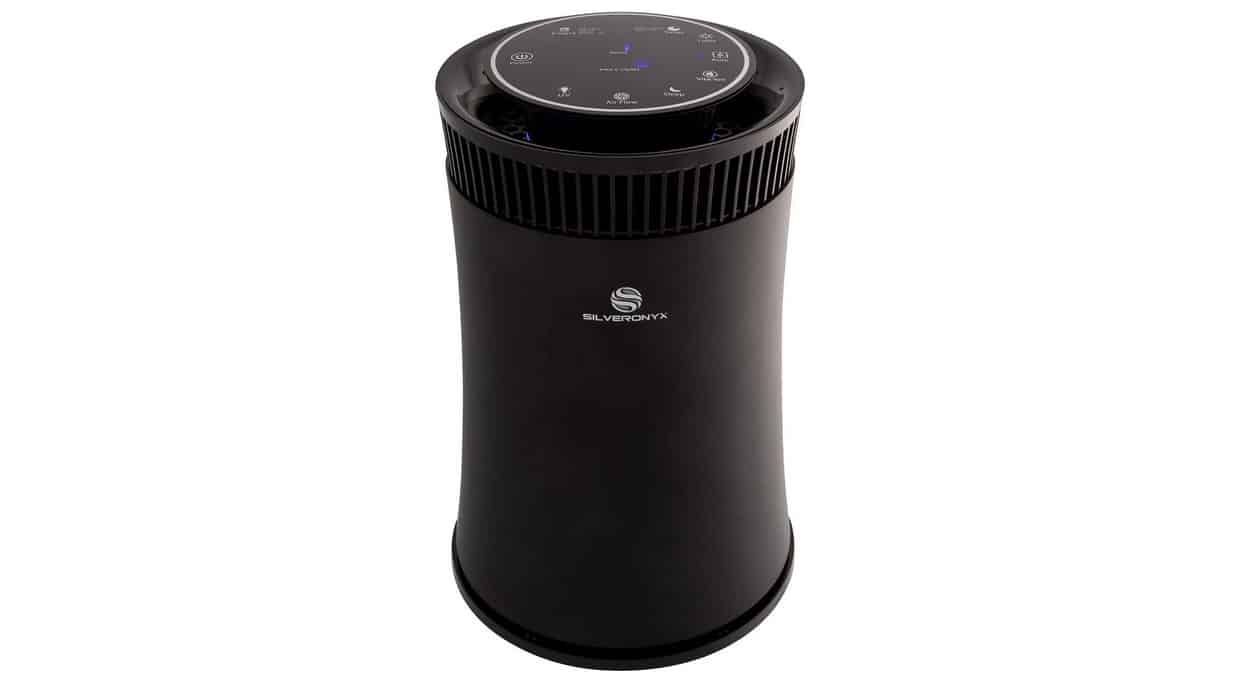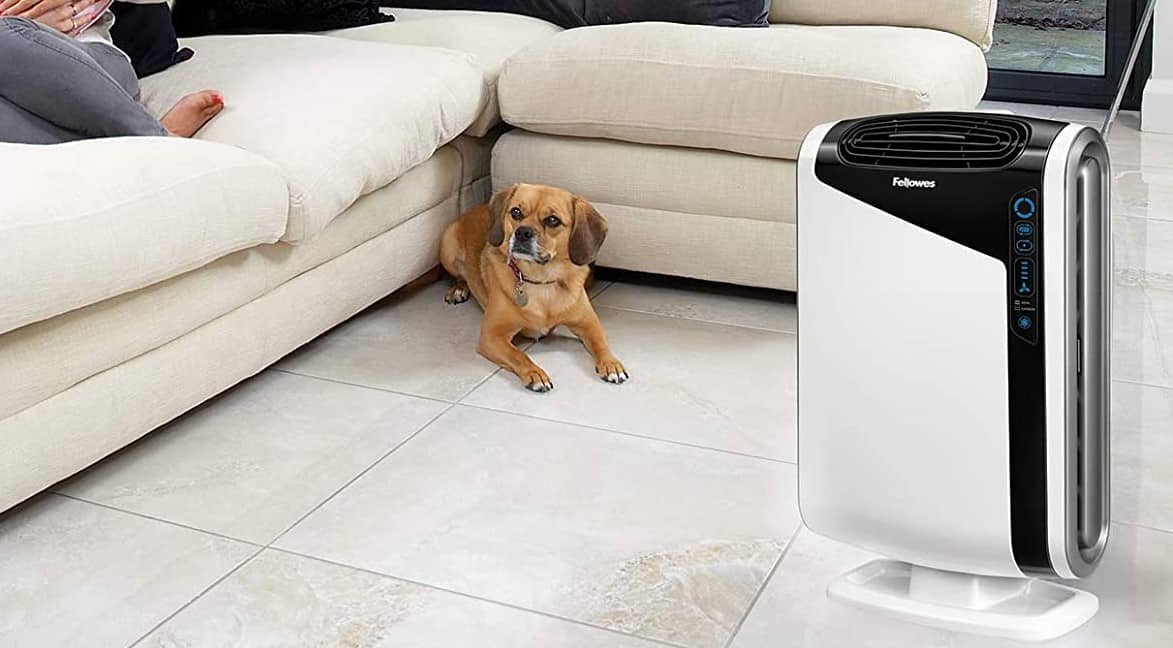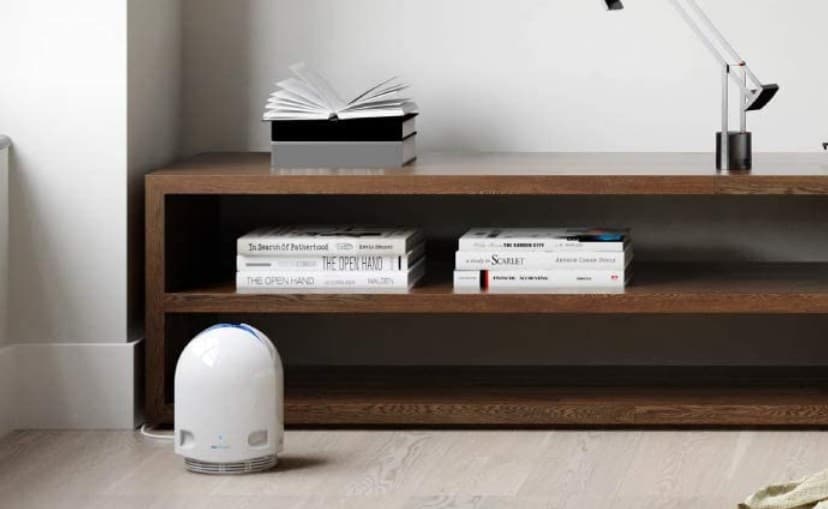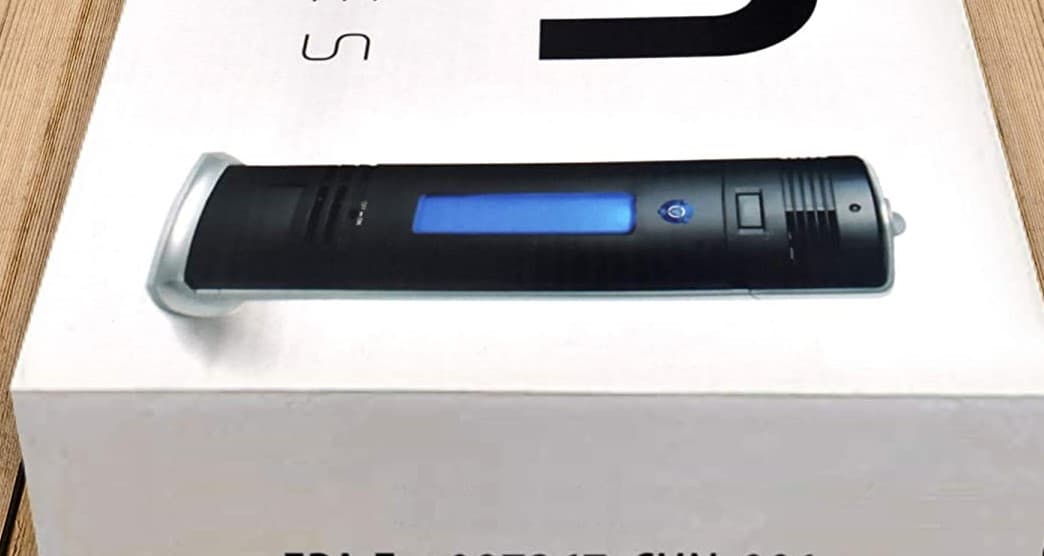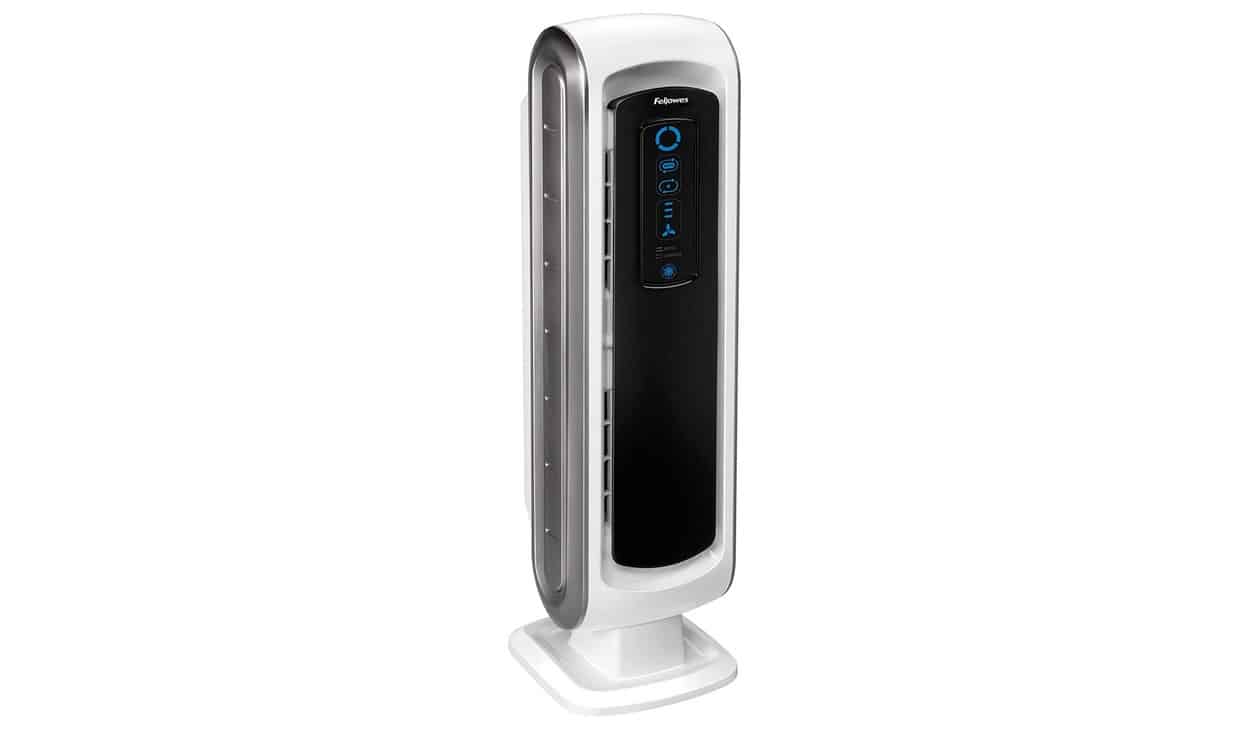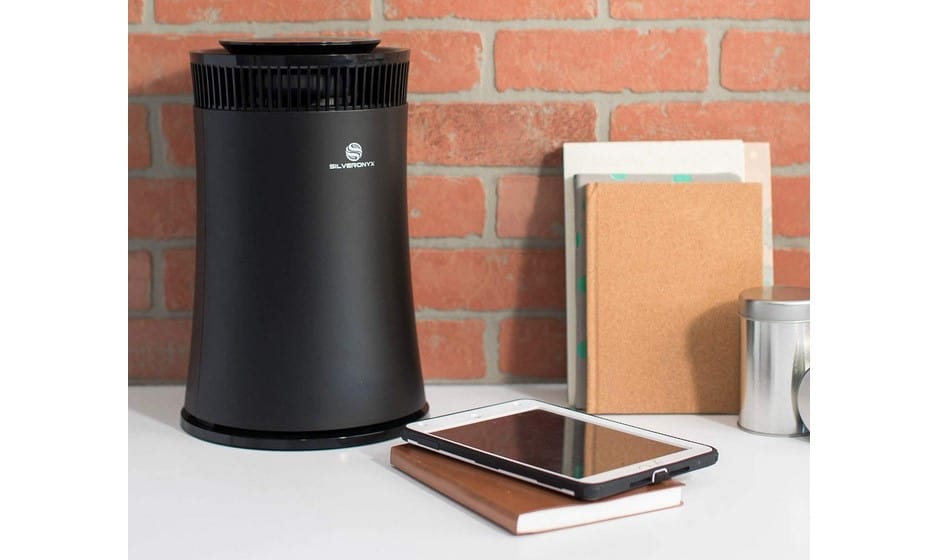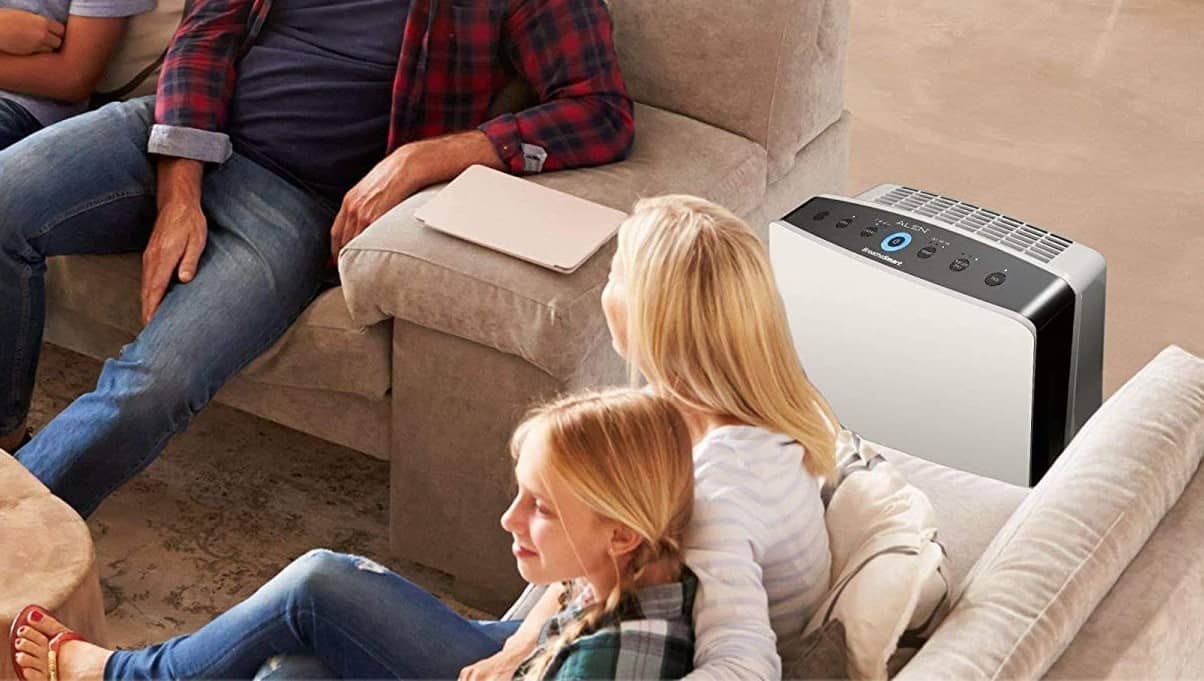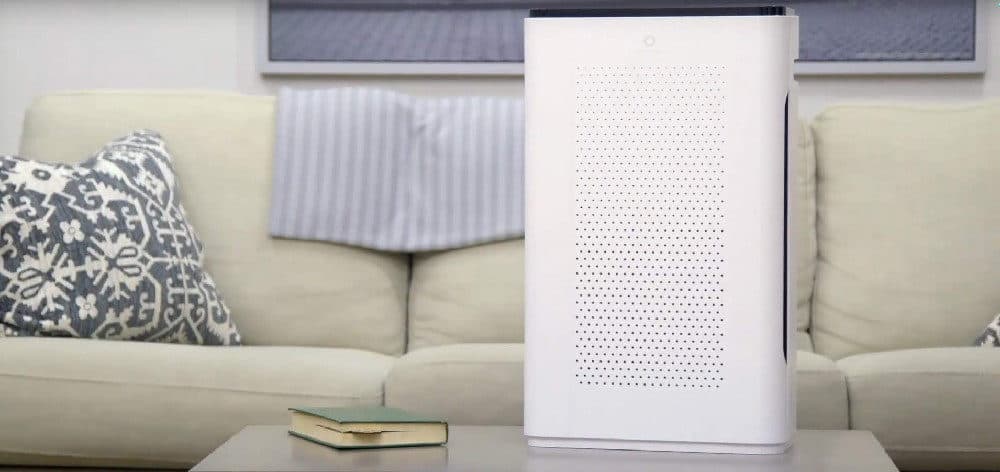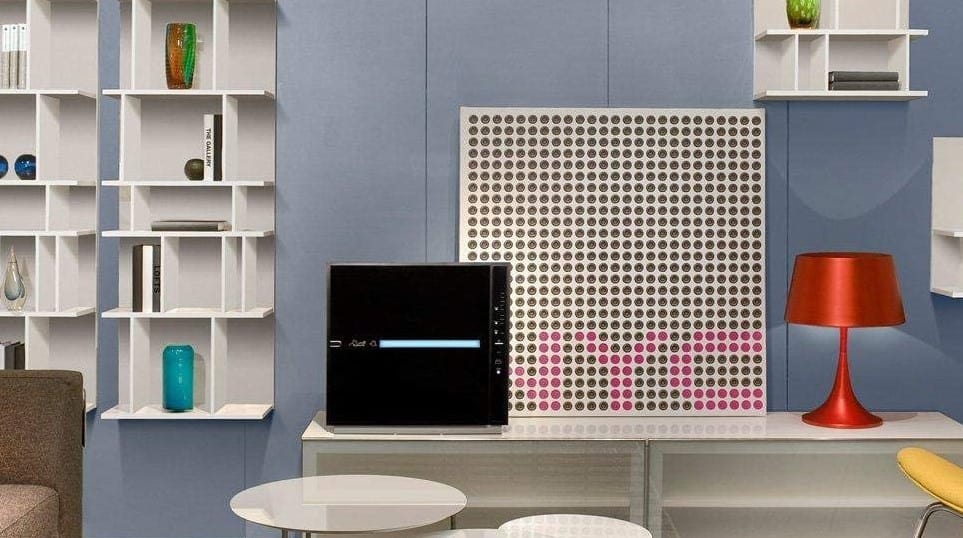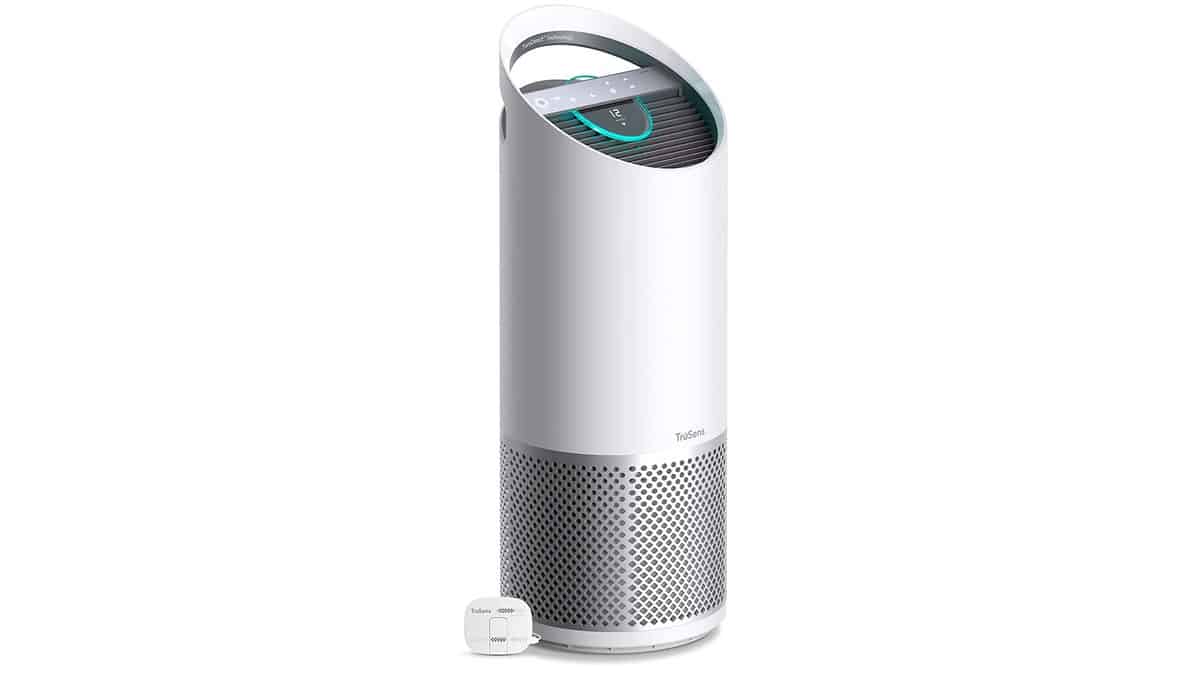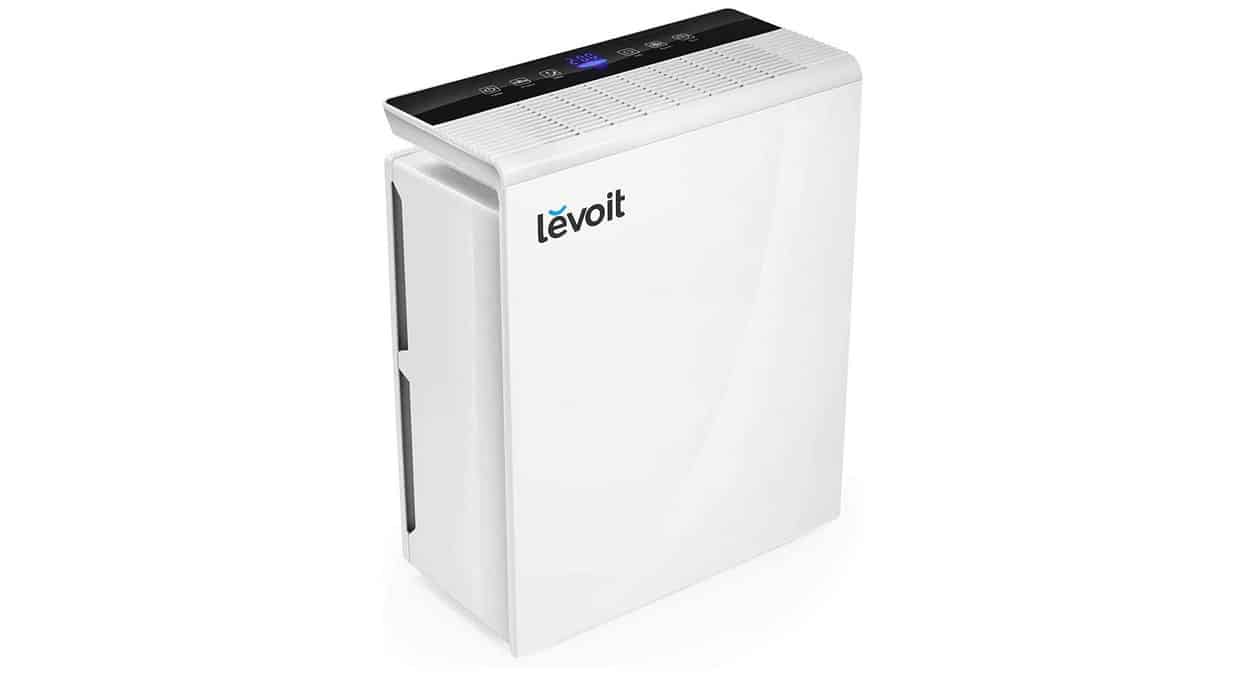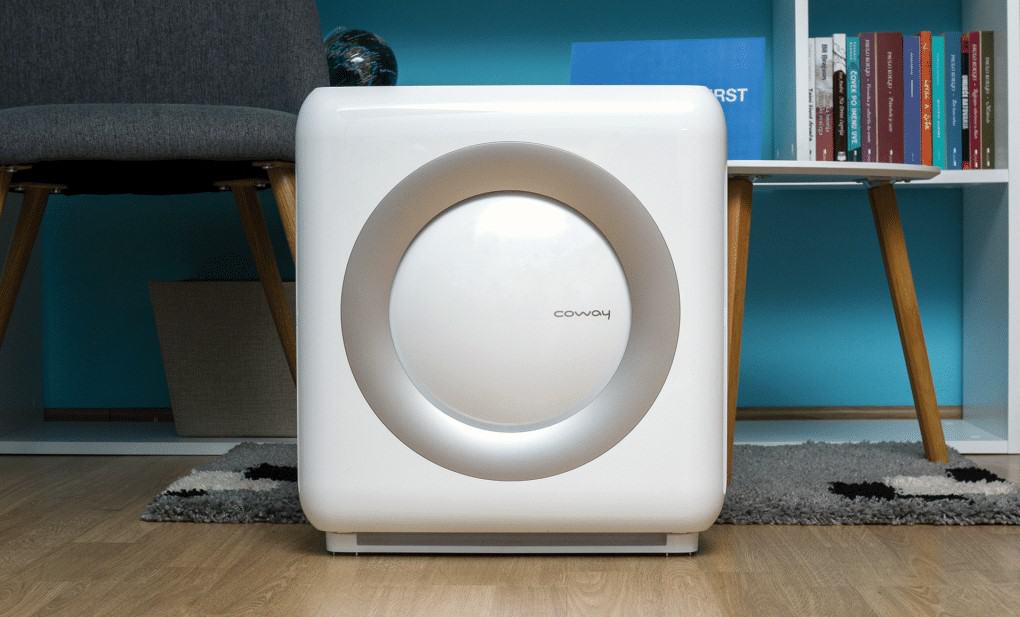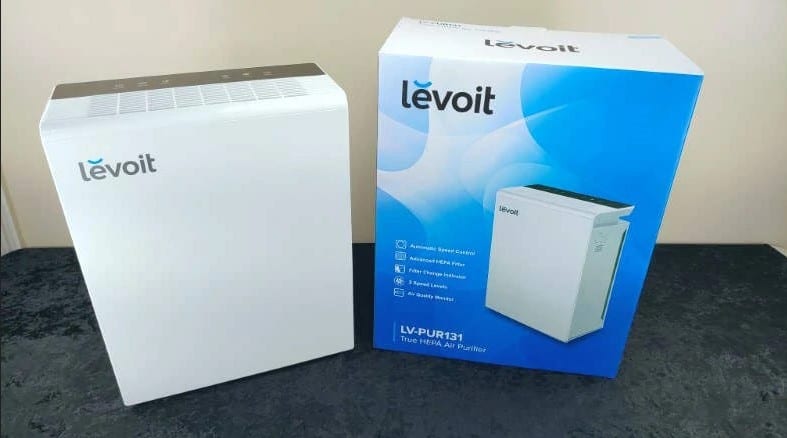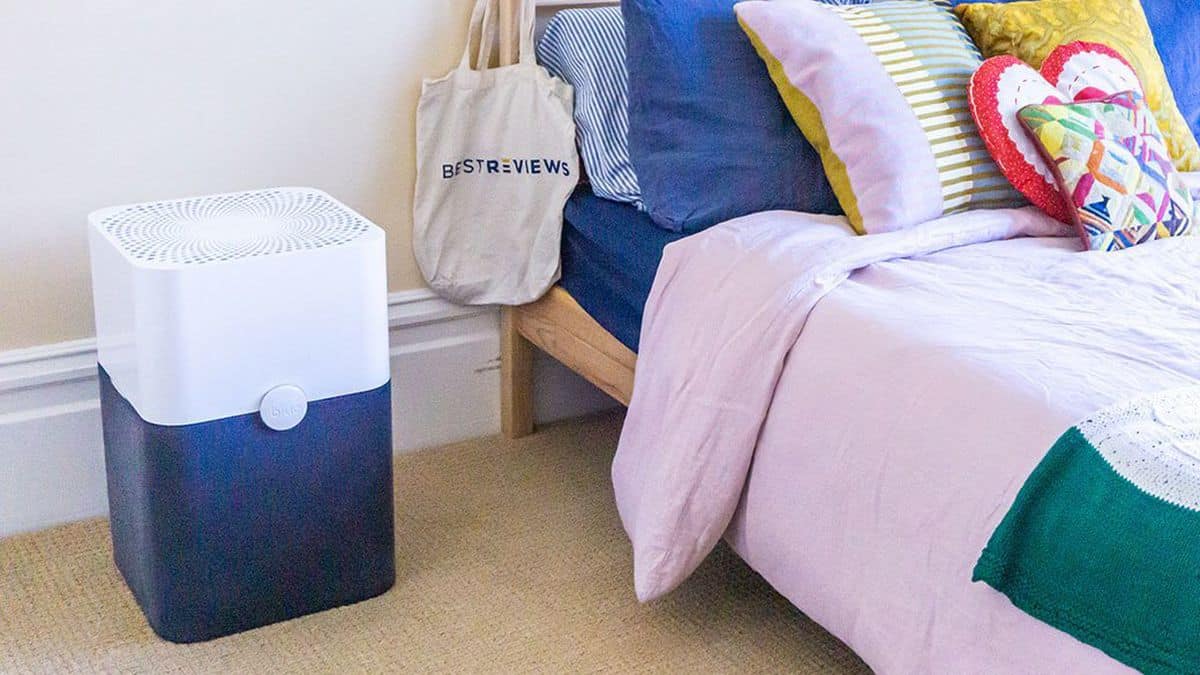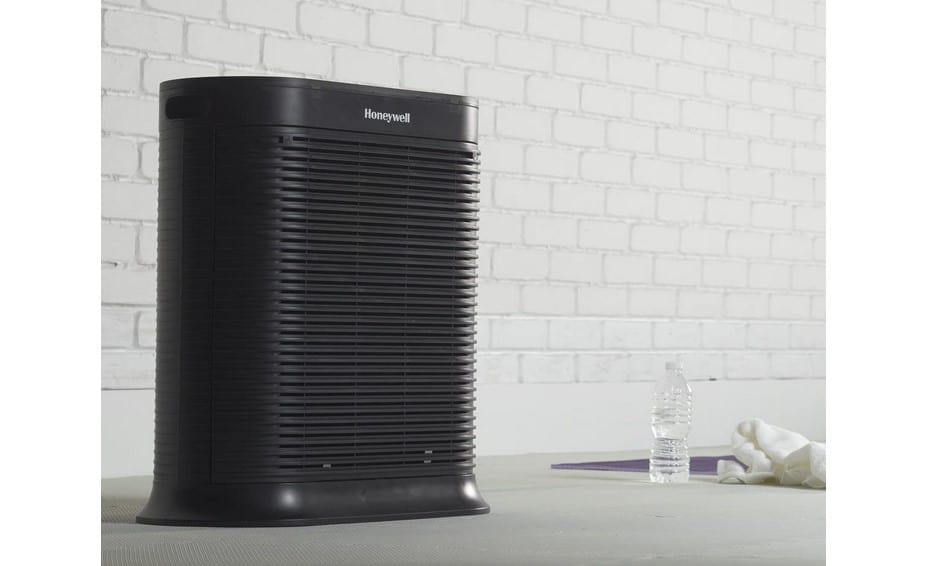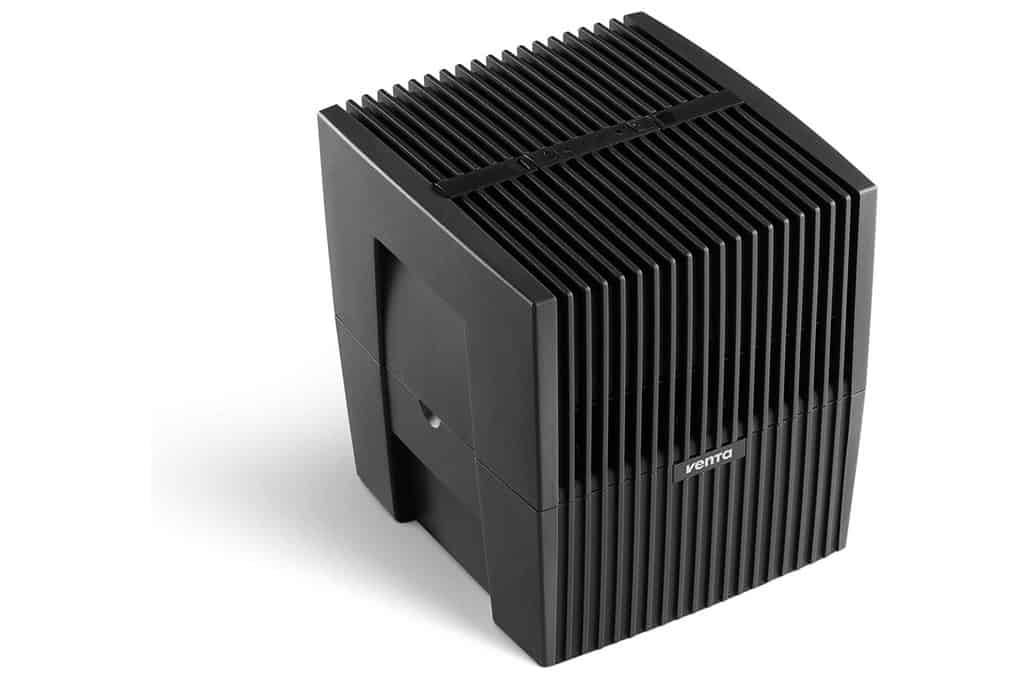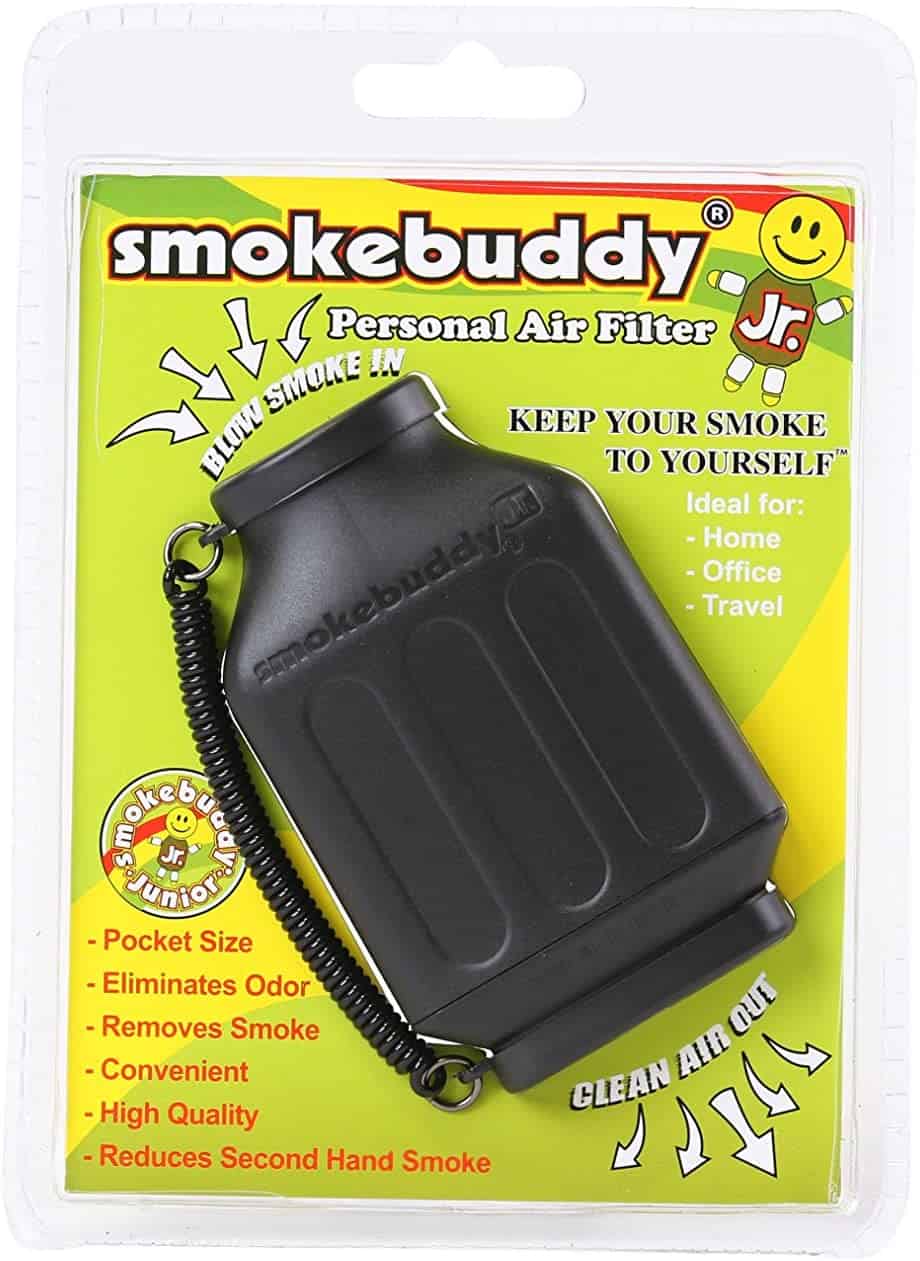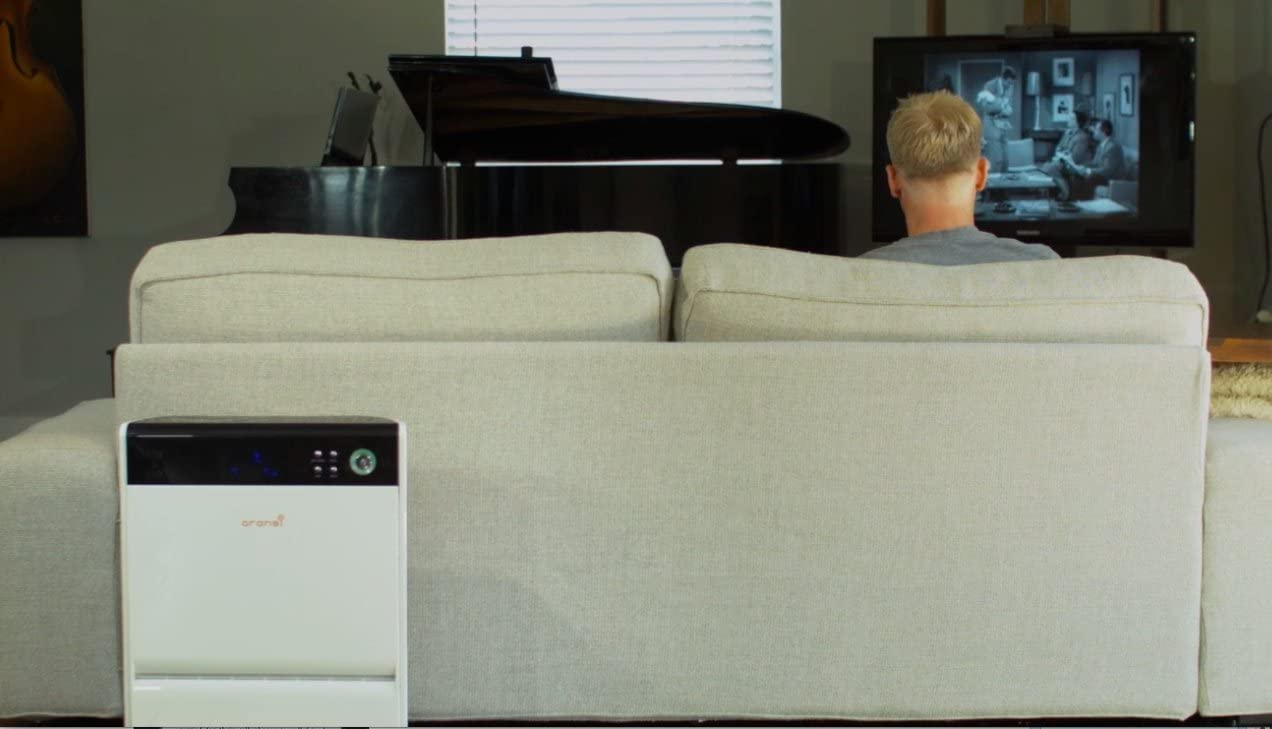Continuing our series on air purification, we’re back again this time with the best air purifier for asthma. In this article, we examine the top five best air purifiers for asthma sufferers based on HEPA filtration, airflow characteristics and management, carbon filter integration, and overall clean air delivery, machine construction, packaging, and end-user experience. Using an air purifier can lower the risk of asthma attacks by reducing triggers such as pollen, dust mites, mold spores, and so on. Our review of the best air purifier breaks it all down and makes it easy to find the right one for your needs. Check it out!
After our research and extensive testing, we’re happy to announce that our #1 top pick and Editor’s Choice for the Best Air Purifier for Asthma is the IQAir HealthPro Plus. Lacking superfluous decontaminating technologies like ultraviolet and ionizing components, the HealthPro plus uses a purely mechanical filtration process to rid the air of airborne particulate contaminants and reduce possible asthma triggers found in dusty room air. Purely mechanical meaning that incoming air is purified with a filter assembly and nothing more – because it doesn’t need anything else. Keep reading to learn more about this powerful air purifier and the other four top picks.
Top 5 Best Air Purifiers for Asthma Compared
#1 IQAir HealthPro Plus Air Purifier
WHY WE LIKE IT: The best air purifier for asthma that we’ve tested to date. It is our top pick and the best for large rooms. The IQAir HealthPro Plus takes air purification seriously and its advanced air filtration system and superior design quality show it.
- The best air filtration we’ve experienced
- HyperHEPA filter
- High-quality build
- Much larger than other options
- Most expensive option on the list
- Expensive filter replacement cost
The IQAir HealthPro Plus is mechanical filtration at its finest. The HealthPro Plus moves an incredibly 780 cubic feet per minute through its 4-stage filtration array, and it covers up the most square footage of any of the purifiers on our list. The unit can purify the air in spaces up to an incredible 1,125 sq ft (square feet). The filter array is made up of 4 different stages: a PreMax Pre-Filter, a granular activated carbon filter, a pelletized chemisorption, and finally the HyperHEPA filter. This comprehensive air purification process eliminates harmful chemicals, VOCs, and ultra-fine particles with ease.
The unit itself is solidly constructed and built to last. This is reflected in the price of the IQAir air purifier, which is by far the most expensive option on our list. Everything about the HealthPro Plus is built with convenience in mind. From the programmable remote to the modular filter design, you’ll find that this air purifier is easy to use and maintain. Be aware, that replacement filters aren’t cheap for this device, either, but that’s the price you’ll pay to get medical-grade filtration and your lungs will thank you for it. If you have a mold issue, the best air purifier for mold is what you need.
#2 AeraMax 300 Air Purifier
WHY WE LIKE IT: The AeraMax 300 is an ultra-quiet and powerful air purifier for asthma and allergies that can even eliminate the flu virus from the air in your home. If you’re looking for efficient air purification and you’re willing to pay a little extra for it, this is the purifier for you. This is our honorable mention as it could have easily also been our top pick. It is also the best for flu.
- Can eliminate the airborne flu virus
- Convenient and accurate Smart Sensor
- Covers large rooms
- High power consumption
- Expensive filters
- Display lights can’t be turned off
The AeraMax 300 is very well built, and due to the level of engineering, the unit is very light, weighing in at only 12 pounds. It’s also one of the best purifiers we’ve tested due to its advanced 4-stage filtration that includes a proprietary PlasmaTRUE technology. This is the 4th stage in the purification process with the AeraMax and it creates an ionized field to remove any remaining airborne pollutants. Speaking of pollutants, check out the best air purifier for smoke.
The AeraMax 300 has been specially certified as asthma and allergy friendly by the Asthma and Allergy Foundation of America, so you know just what high-quality purification you’re going to get when you purchase this unit. The AeraMax can even eliminate the airborne flu virus, which is outstanding. We also really liked the built-in smart sensor that monitors your air quality and makes automatic adjustments accordingly. Unfortunately, you’ll need to swap filters out every six months and the replacements can get pricey. But in the end, we’ve found that the added expense is well worth the level of purification you get from the AeraMax 300. If you want to look at other options, check out the best air purifier under 100.
#3 Pure Enrichment PureZone Air Purifier
WHY WE LIKE IT: With a compact design, premium filtration options, and an extra-affordable price, the Pure Enrichment PureZone air purifier is one you’ll want to watch if you want clean air on the best budget.
- Includes an air quality sensor
- Compact, portable and sleek design
- Low cost to maintain
- Only works well for small rooms
- Disappointingly low CADR rating
- Overall build feels a little cheap
You won’t get much in the way of cutting-edge technology or features with the Pure Enrichment PureZone air purifier, even though the unit looks the part. However, you’ll still get some efficient and powerful filtration functionality that works well for getting rid of allergens and asthma particles. The unit is advertised as a 3-in-1 filtration device, but you’ll experience 4 separate stages when you consider the include UV-C light.
This comprehensive purification process eliminates tough particles like smoke, pet dander, and more, which is why it’s so good for people with asthma to have in their homes. Of course, with such a small and compact design, you can’t expect the PureZone to clean rooms larger than around 200 square feet. All in all, the Pure Enrichment PureZone is a powerful little air purifier that you can easily carry to any room in your house for a comprehensive purification process. To make sure you get a HEPA model, read the best HEPA air purifier.
#4 Hathaspace Smart Air Purifier
WHY WE LIKE IT: You may not have heard of Hathaspace air purifiers before, but it’s a Chinese manufacturer that’s highly competitive with the US market today. It features tons of helpful smart features and an effective 5-in-1 filtration design for maximum purification. It is our best value pick and the one with the best smart features.
- Powerful 5-stage filtration
- Includes tons of smart features
- Operates very quietly
- Short, 1-year warranty
- Cheaper build
- Hard-to-reach customer service
One of the best things that the Hathaspace Smart air purifier offers is all of the smart functionality included. To start, you’ll get a built-in air quality sensor that detects your air quality and shows it to you so you can see air quality information and know-how well the unit is working. You’ll also get an automatic mode that will play off of the smart sensors and automatically adjust fan speeds based on how much purification your air needs. We were also super pleased with just how quiet the Hathaspace runs, especially in its Whisper-Quiet Sleep mode, which operates at an impressive 18 dB. This mode also completely turns off all display lights so they won’t disturb you while you sleep.
The Hathaspace’s filtration system is also something we were impressed by. It features a unique 5-in-1 system, which is more comprehensive than many options available today. The 5 stages include a nano cold catalyst filter, an activated carbon filter, an antibacterial filter, a True HEPA filter, and an ionizer. Overall we were happy with the purification we experienced. Due to the onboard air quality sensor, we were able to see a noticeable improvement in our air quality after using the Hathaspace. Unfortunately, the unit itself feels a bit cheaply constructed and when we tried to reach out to customer service, we had a hard time reaching anyone. This is probably due in part to the fact that this is an international company. Check out the best air purifier for pets if you have animals.
#5 Levoit LV-PUR131 Air Purifier
WHY WE LIKE IT: Levoit is a powerhouse company when it comes to air filtration and purification, and their overall quality is apparent in the LV-PUR131. With a large coverage area and whisper-quiet operation, this is a great choice for anyone who wants to set it and forget it. It is our pick for the best quiet operation machine.
- Well built unit
- Good price for large room coverage
- Excellent filtration performance
- Motor runs hot
- Hard to move around
- Filter reset button is a little hard to press
There’s no question about it, the Levoit LV-PUR131 is designed well. It features a simple, yet evocative white design that doesn’t stand out or get in the way of anything else in the room. However, it is a little hard to move around with no wheels, so we recommend finding a place to put it and not move it around too much. Since it can cover spaces up to 360 square feet, we recommend choosing a large room and using it there.
The LV-PUR131 only offers a 3-in-1 filtration system, but that’s more than enough to cover most people’s needs. The best thing about turning the Levoit unit on is how quietly it operates. If you weren’t the one to turn it on, you would likely just never notice that it was running in the background. Unfortunately, the motor can run hot during prolonged use, so be aware that you’ll probably want to give it a break between long purification settings. We were impressed by how well this unit cleaned the air, even in a variety of different situations. We found that it did well-cleaning smoke and pet dander, making it perfect for anyone who has asthma or allergies. Compare this one to an ozone generator and an air purifier.
How We Choose the Best Air Purifier for Asthma
Wading through the sea of air purifiers on the market today can be overwhelming if you aren’t sure what you’re looking for – but we’re here to make that process just a little easier. Our appliance contributor, Chase Williams, has nearly a decade of experience as an instrumentation and controls engineer working with heavy equipment and monitoring devices within some of the largest manufacturing facilities in the world. He has meticulously reviewed air purifiers from a wide variety of manufacturers and the list that follows includes only the absolute best three performing air cleaners for consumers that suffer from allergies, or asthma.
Inspections of air purifiers initially began with a general review of the physical filters employed in each machine. Filtration methods vary from manufacturer to manufacturer, but generally, most air cleaners rely on a three-stage filtration method. The purification process will push air through the following stages: pre-filtration, carbon media, HEPA filter
Pre-filtration, or pre-filters, are intended to remove large airborne material from the airflow before treatment. This is wholly meant to protect the machine from flow blockage caused by things like pet hair, dust bunnies, and really anything larger than a strand of human hair. A great (and some would argue conventionally) air purifier usually includes an external pre-filter that’s removable and washable. These don’t need to be replaced, and only require minimal maintenance when buildup occurs. These always make great air purifiers with a washable filter.
Carbon media is best effective for odor and volatile organic compound (VOC) removal from environments. Types of carbon media, additives, treatments, and total amounts of media used all need to be considered to weigh the effectiveness of each application and comparison between similar air purifier models. Having said that, there are a few good rules of thumb to stick to: (1) The more activated carbon media used in a device, the greater the filtration capacity. Manufacturers proud of their carbon filters will openly advertise the activated carbon weight; (2) Carbon filters and HEPA filters are not going to have the same usable lifespan, so a product that has separate filters instead of one filter assembly is ideal for those looking to cut costs associated with filter replacement; (3) Specific treatments and impregnation of various materials, like alumina, are used for specific applications. Alumina is used as a desiccant to remove moisture from the air and the treated environment’s air is dried in the process. If you require specific chemicals removed from your home’s air, take time to ensure that the filtration process you’re investigating will do the job.
Finally, HEPA filter classification was measured to ensure the medical-grade quality necessary to treat air for asthma sufferers. HEPA filter grades can be measured based on the density of filter construction, and there are standardized grading systems that manufacturers and consumers can refer to. The most common specification used is the European Norm which defines several classes of filters based on the retention rate of particles of a specified size, or larger. For this list, only HEPA filters capable of a retention rate of 99.95% were considered (medical-grade filters).
For an air purifier that lets you customize this filtration process to suit your needs, check out the Rabbit Air MinusA2. With a six-stage filtration system specifically designed to combat allergens and potential asthma triggers, this air purifier lets you customize the fourth-stage filter. Choose from a range of options including Germ Defence, Pet Allergy, Odor Remover, or Toxin Absorber.
Why You Should Buy One of the Best Air Purifiers for Asthma
Asthma can be debilitating. Allergies can shut down an otherwise perfect day. When it comes to indoor air quality you shouldn’t have to worry about irritants making a condition even worse – and you don’t have to. The Environmental Protection Agency lists indoor air pollutants as one of the leading health risks in the United States, and for good reason – as more and more products are sold to consumers, more contaminants are introduced to those consumers’ homes. Cleaning products release VOCs that can be detrimental to an individual’s health at specific levels. Cooking releases VOCs too. Even some furniture can release harmful pollutants into the air.

In addition to VOCs, indoor pets, dust, dead skin cells, mites, and even fecal matter can linger in a home’s air causing unwanted respiratory reactions and complications. Buying the absolute best air purifier for asthma for your family can dramatically improve respiratory health.
Having said all of that, let’s get on with our list of the best air purifier for asthma this year.
Best Air Purifier for Asthma – Key Factors
Carbon Filter
- Carbon filter weight played heavily in our decision to rank the Austin Air Bedroom Machine is our top pick (At 15 pounds, the activated carbon component of the filter array is one of the heaviest we’ve seen in a consumer-grade air purifier).
- Activated carbon is the only filter media that will reduce, or completely remove, odors from an environment, and it’s the only effective method of reducing VOCs. For people suffering from asthma, carbon filtration is a critical component.
HEPA Classification
- HEPA air filters are classified based on particulate retention rate. As airflow is directed through a HEPA filter, particles are captured by woven fibers within the filter membrane. The tighter the weave, the higher the retention.
- The European Norm for HEPA filter classification ranges from a retention rate of 85% to 99.999995%. The standard retention rate is 99.97% for particles as small as 0.3 microns. For our review, only HEPA filters, which retain at least 99.95% of airborne particles were included.
- Utilization of HEPA as the primary cleaning method means that things like ionization and ultraviolet treatment aren’t incorporated into the air purifier’s design. Pulmonary side-effects from byproducts of ionization (ozone) are avoided through purely mechanical filtration.
Airflow Management
- Air purification machines are designed to pull in dirty air and push out air that’s been filtered, but without the right placement of intake and output vents, airflow patterns around the machine can inhibit efficient cleansing. If the intake and output vents are too close together the machine may only recirculate already purified air, and that’s no good. For our study, we analyzed airflow patterns to determine if this kind of cycling was likely and removed machines with inadequate designs.
Best Air Purifier for Asthma – Features to Look For
Automatic Mode
- An automatic mode allows users to step away from managing increasing or decreasing the purifier’s fan speed setting. It automatically adjusts from low to high based on the indoor air quality level. If pollutants are detected, the machine increases airflow to remove contaminants as quickly as possible and then returns to a lower setting after particulate detection decreases.
WiFi
- Wireless connectivity, as silly as it may sound to some, can be very convenient. Some machines allow for remote monitoring of both indoor air quality and machine functionality. If you’re a busy professional that wants to ensure your home’s air is always being treated for pollution properly, a WiFi feature could be something to look for.
- Some machines which lack an indoor air quality sensor can connect to remote sensors (sold separately). In this case, WiFi connectivity is required to communicate air filtration needs between the sensor and the purifier.
- Managing energy usage while on vacation is another great feature that can be utilized with a WiFi-compatible unit.
Removable Pre-Filter
- While a well-constructed filer array (one piece that includes the pre-filter, carbon filter, and HEPA filter) works fine if designed properly, a removable pre-filter is ideal for easy cleaning of large dust accumulation. Pre-filters should be visually examined regularly to ensure that airflow isn’t being inhibited by a blockage.
- We also prefer that removable pre-filters are accessible from the exterior of the air purifier. It makes inspecting and cleaning easier for the end-users.
Best Air Purifier for Asthma – Mistakes to Avoid
Don’t purchase a machine that lacks a quality carbon filter. Look for specific information about the carbon filtration stage, call the manufacturer if you can’t find the data online, and compare the carbon filter weight of each machine you’re investigating. Remember, a heavier activated carbon filter means longer filter life and a greater surface area to more effectively adsorb odors and VOCs.
Just like carbon filters, HEPA information should be readily available on the manufacturers, or retailers, websites. Look for the 99.95% badge – this will ensure that the air filter traps 99.95% of particles as small as 0.3 microns in size and that purification is in the right retention range for asthmatic consumers.
Pick a dedicated spot for the air purifier in your home that’s at least 12 inches away from any surface, or object. This will ensure that airflow isn’t impeded in or out of the device. Run the machine on its highest setting 2-3 hours after installation, after which a lower fan speed setting can be selected, or you can engage an automatic program if one is featured on the device you purchase.
Surge protection should be used to protect the air purifier’s motor from unstable electrical current. Any cheap surge protector will suffice. Speaking of cheap, read about the best cheap air purifier.
If you’re concerned about energy usage, consult the owner’s manual to determine maximum and average electrical loads. In manual operation, adjust for everyday needs. If you’re cleaning, vacuuming, bathing the dog, or cooking, turn the machine to its highest fan speed. If you’re leaving your home, or sleeping, reduce the fan speed to its lowest setting. This will optimize both electrical usage and air purification. As a simple way to roughly estimate energy costs, look for the wattage of the device in question and assume a cost per year equivalent to that wattage. For instance, if a machine consumes 175 watts, assume it will cost $175 per year to operate. This trick can not be used with appliances like dryers – it only works for 24-hour operating devices, and it doesn’t account for variations in fan speed. For a more accurate calculation, use this online tool and select “fan” from the drop-down. This is why you’ll want to know how much an air purifier will cost you, especially if you want to save money.
What Else You Should Think About When Buying an Air Purifier for Asthma
Not all air purifiers are created equally. Don’t make the assumption that using just any air purifier is better than not using one at all – this is incorrect. There are different types of air purifiers available on the market. Depending on the technology used to clean the air, some machines may even exacerbate allergy and asthma symptoms. Plus, if you need an air purifier to clean more than one room, you’ll need something very powerful.
Introducing the right air purifier into your home is only the first step in combating irritants in the air. Make sure any contaminants that can be removed to the outside are. Avoid spraying aerosols in the home if possible. Vacuum carpets with a HEPA-rated vacuum cleaner, and regularly clean curtains and bedding. If you have an indoor pet, consider using hypoallergenic shampoo.
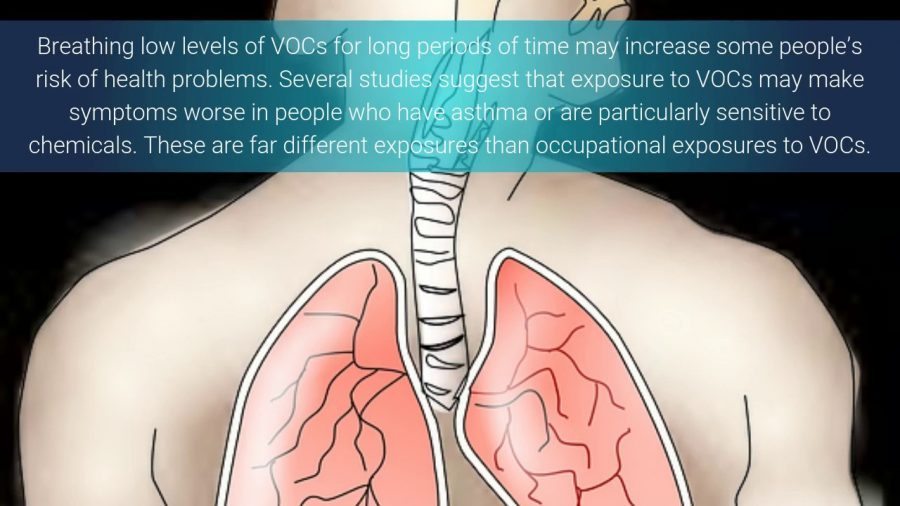
Check out our article on how to properly clean your air purifier; If you want to know more about HEPA filtration, we’ve got something for you; If you’re interested, check out our lists of the best air purifiers for allergies, high-end air purifiers/humidifiers, top-rated purifiers for VOCs and formaldehyde, and the leading air purifiers for babies. Variations in filter dynamics affect the effectiveness of air purifiers for different intended uses. For instance, the best air purifier for smoke isn’t the greatest air purifier for dust.
The best air purifier for asthma can help reduce indoor air pollution and improve overall health if used correctly, and in conjunction with cleaning best practices. Always consider air purification as one component in the fight against indoor air pollutants. To ensure continued air quality improvement, your air purifier should be operated on a regular schedule (if not around the clock).











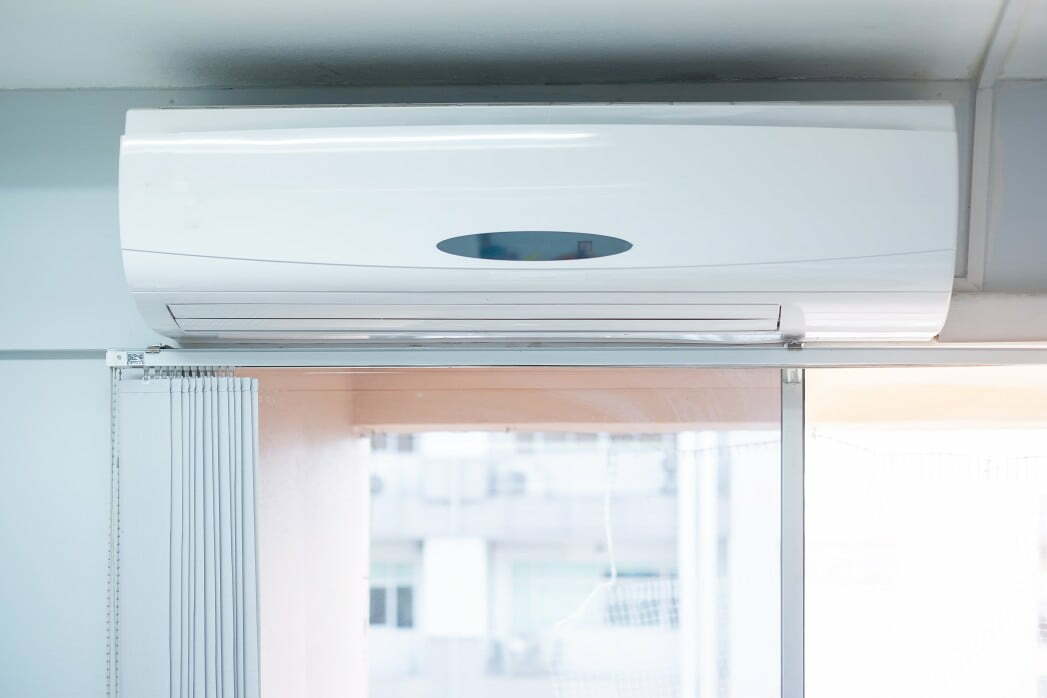

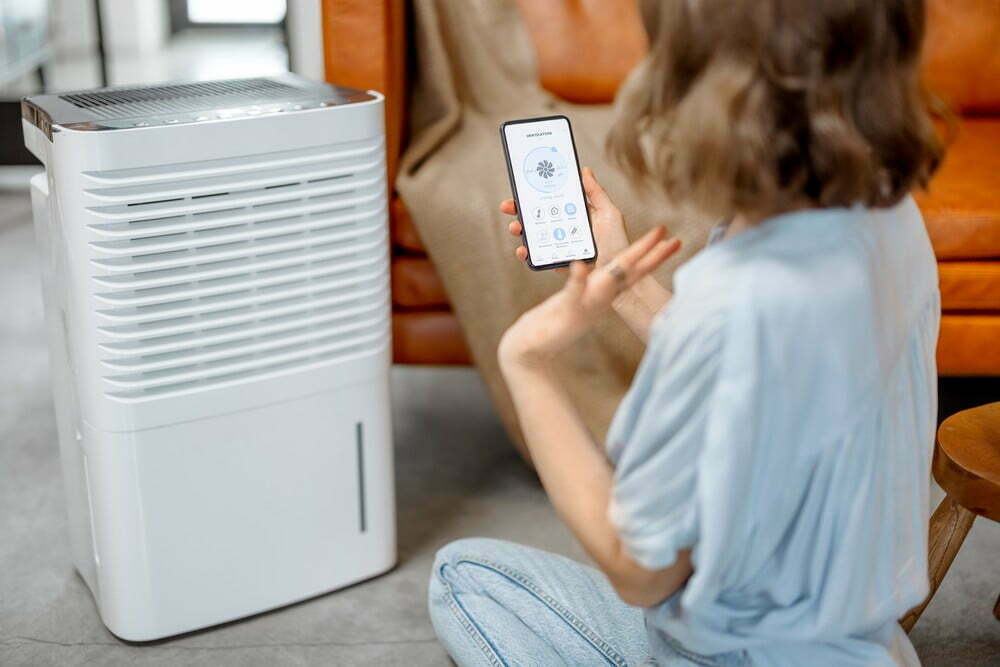
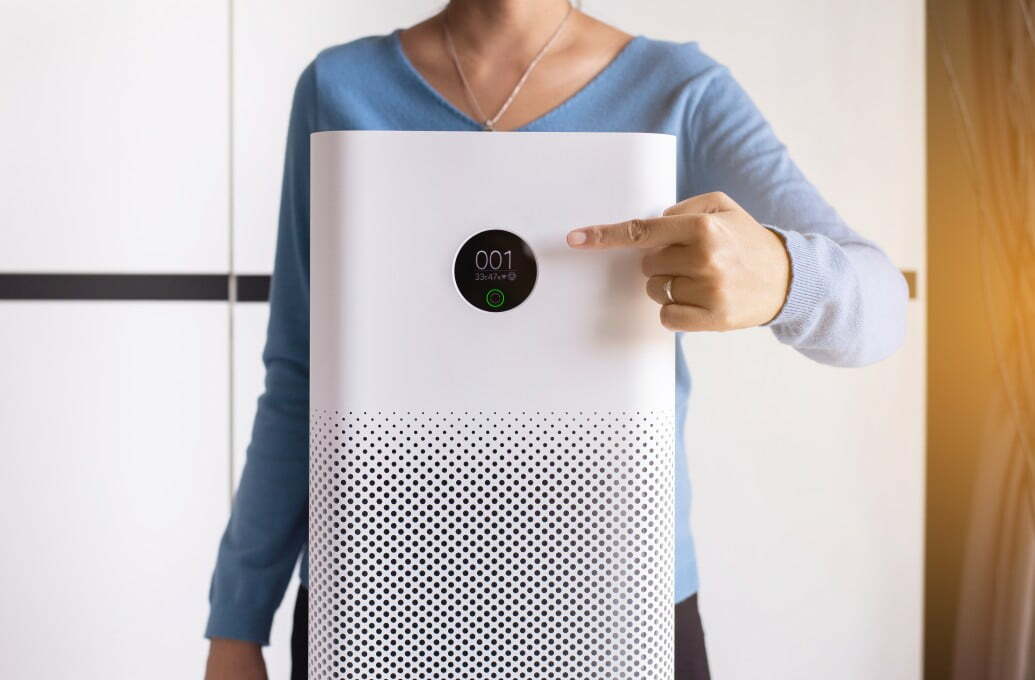
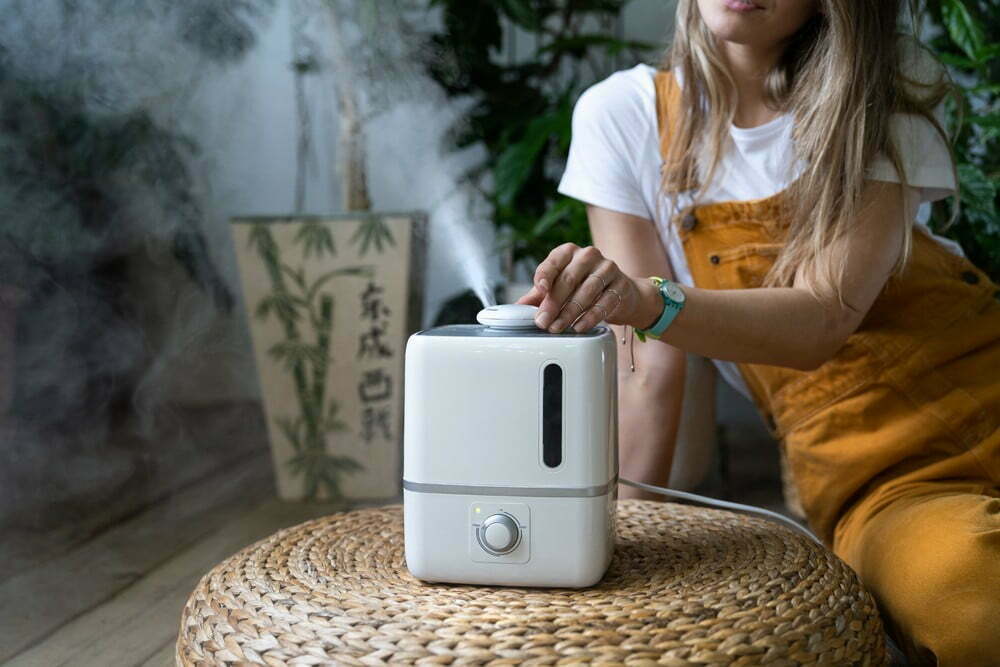
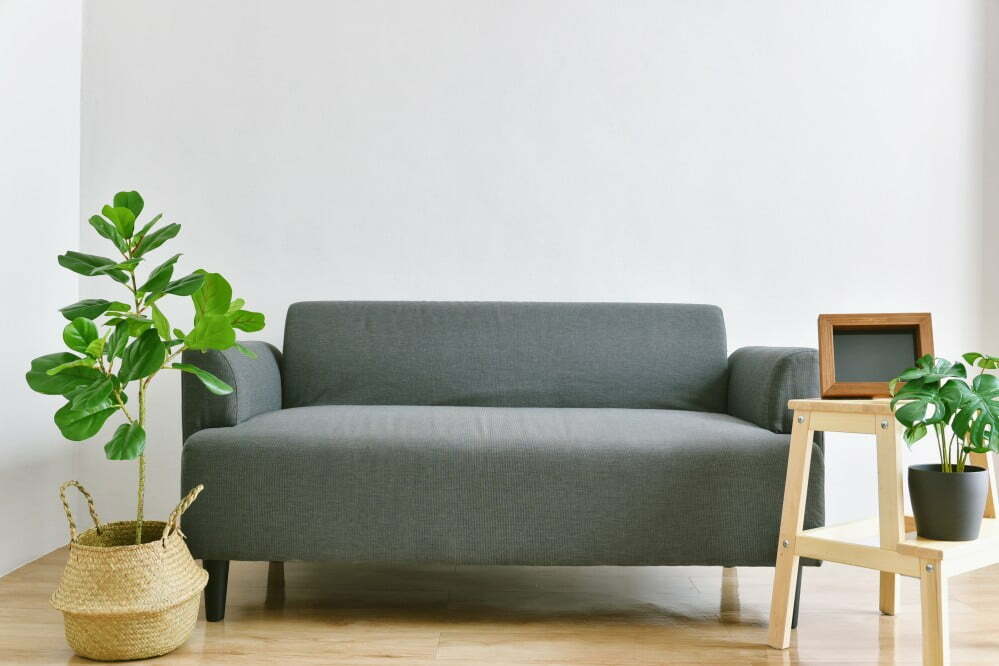

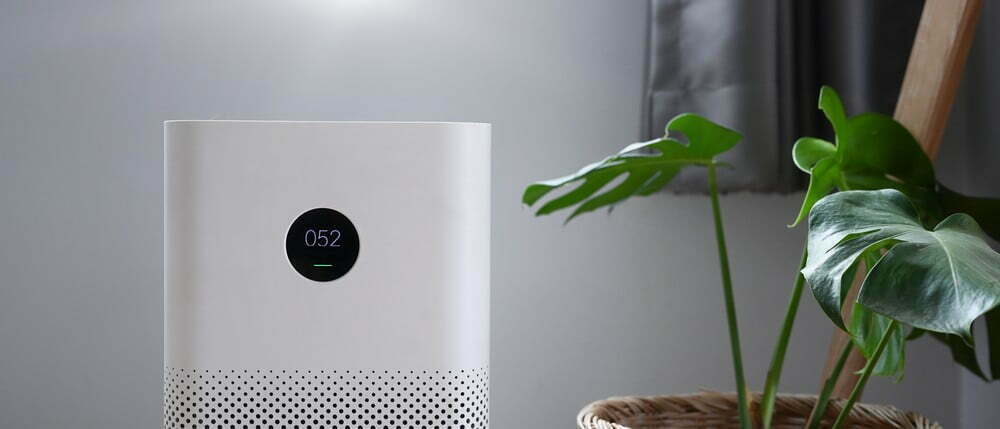
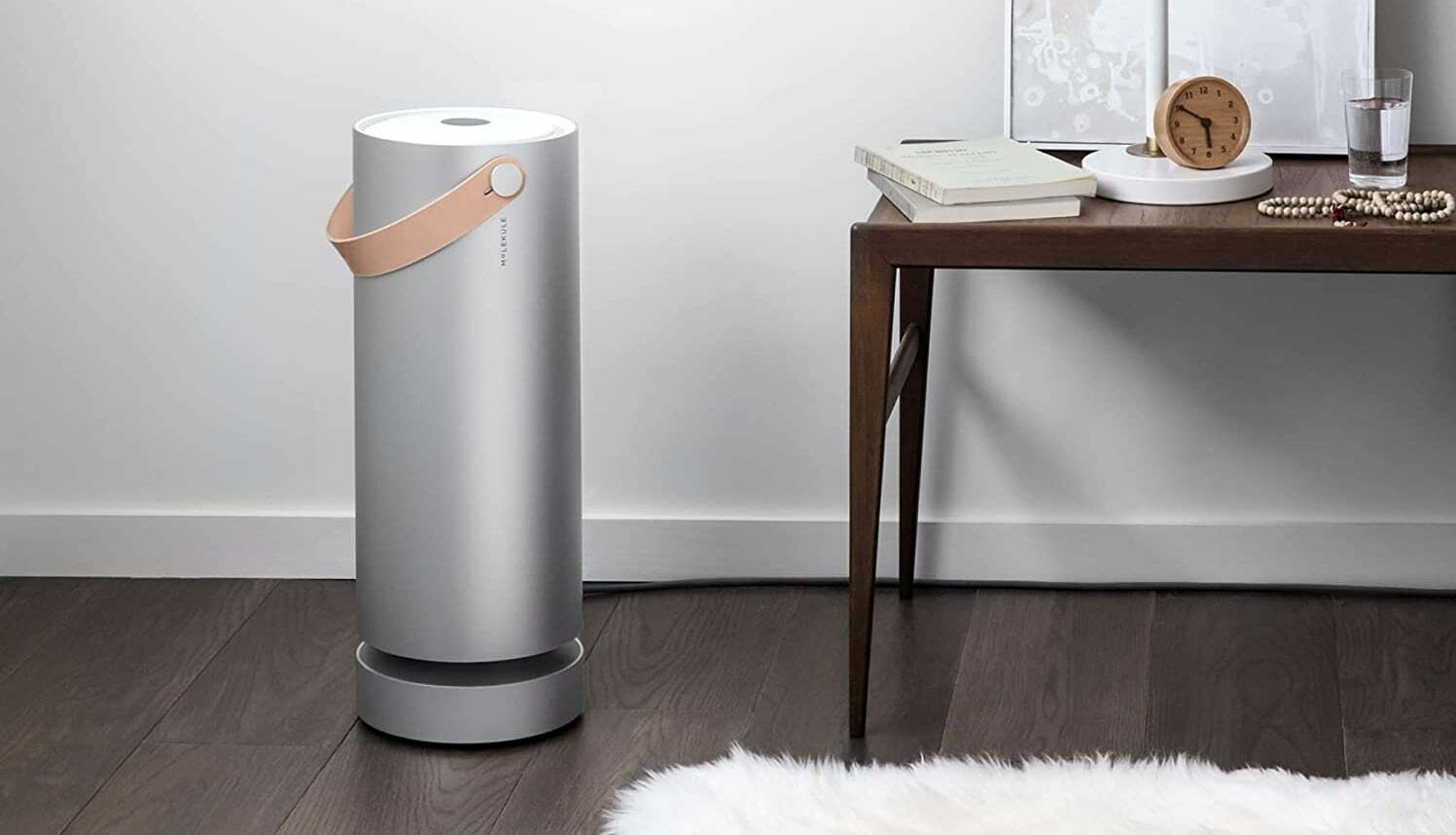
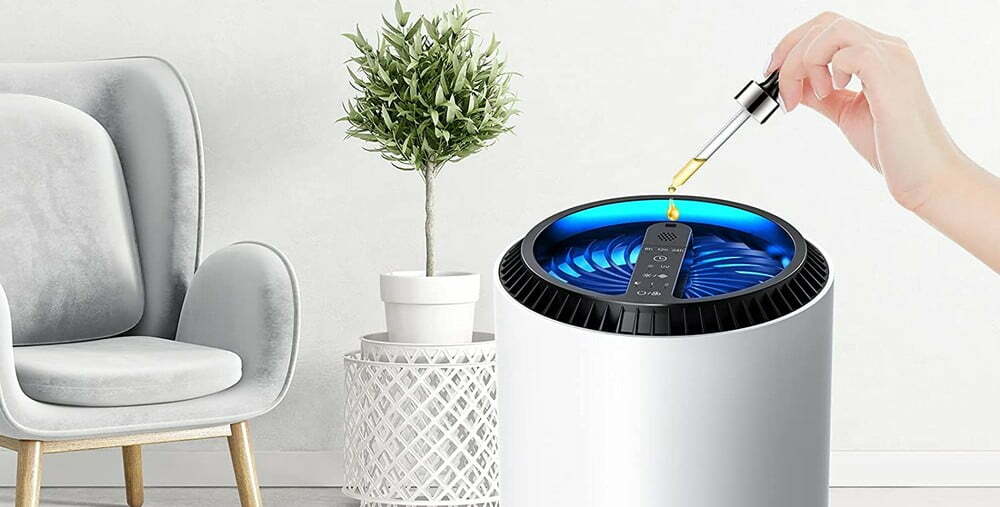
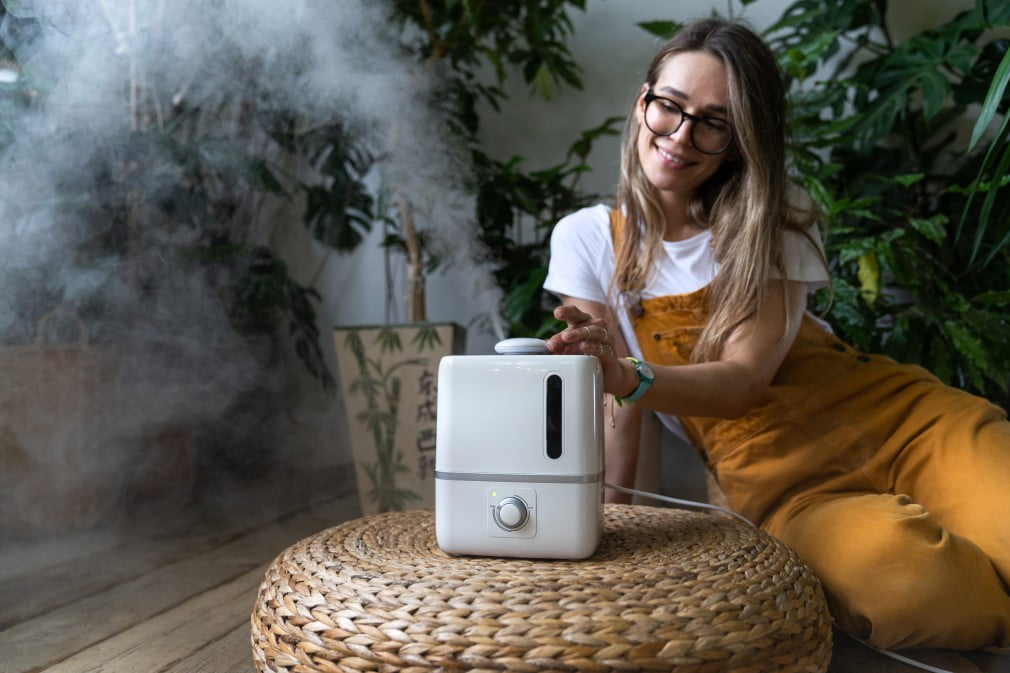
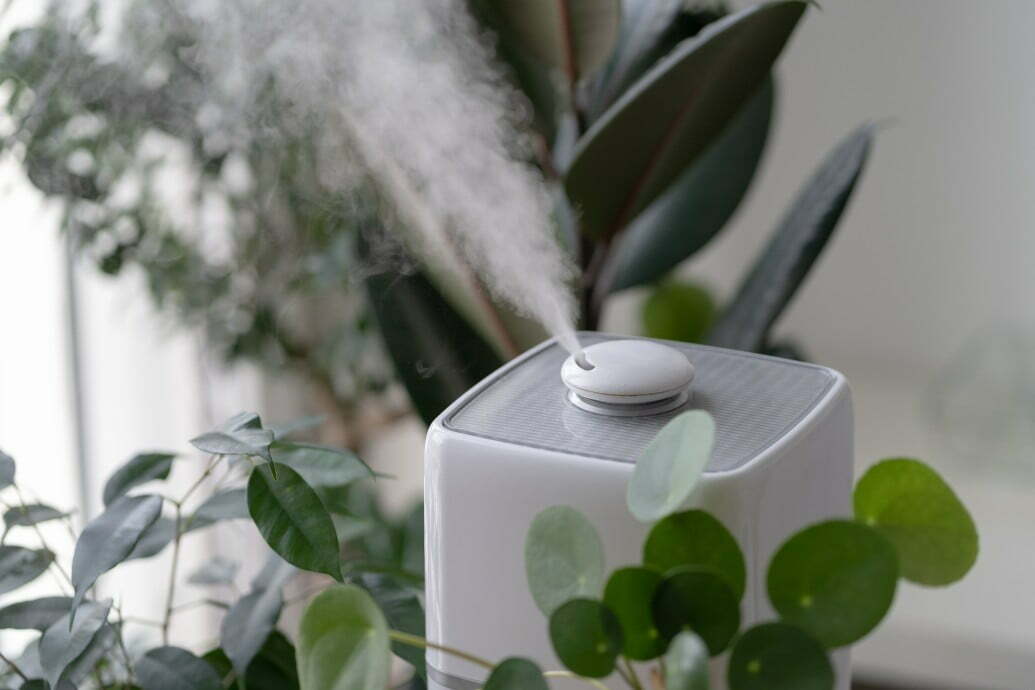
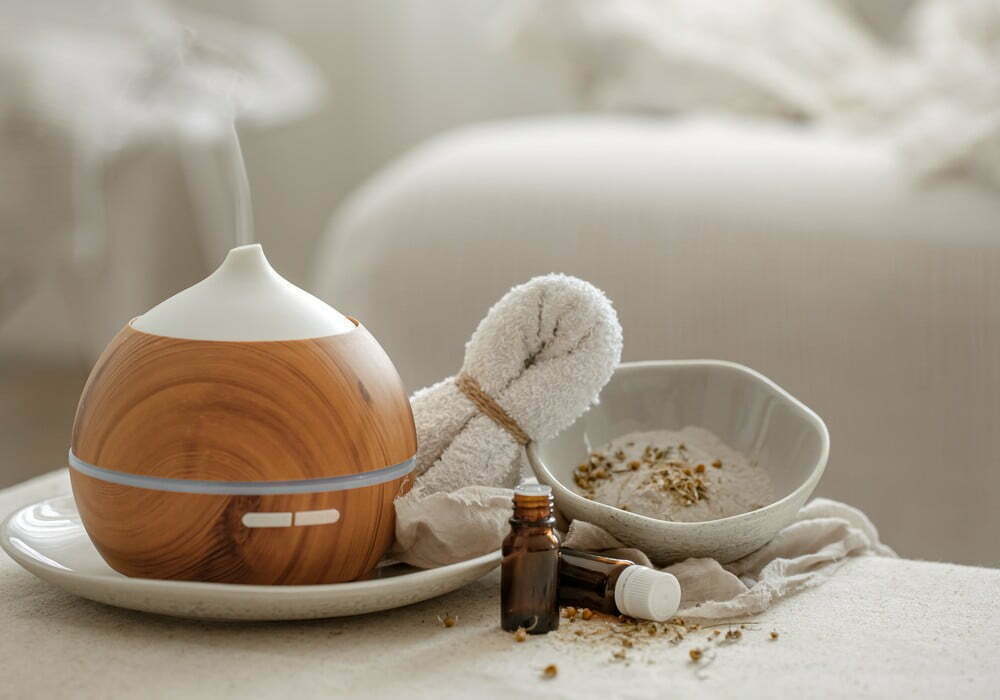
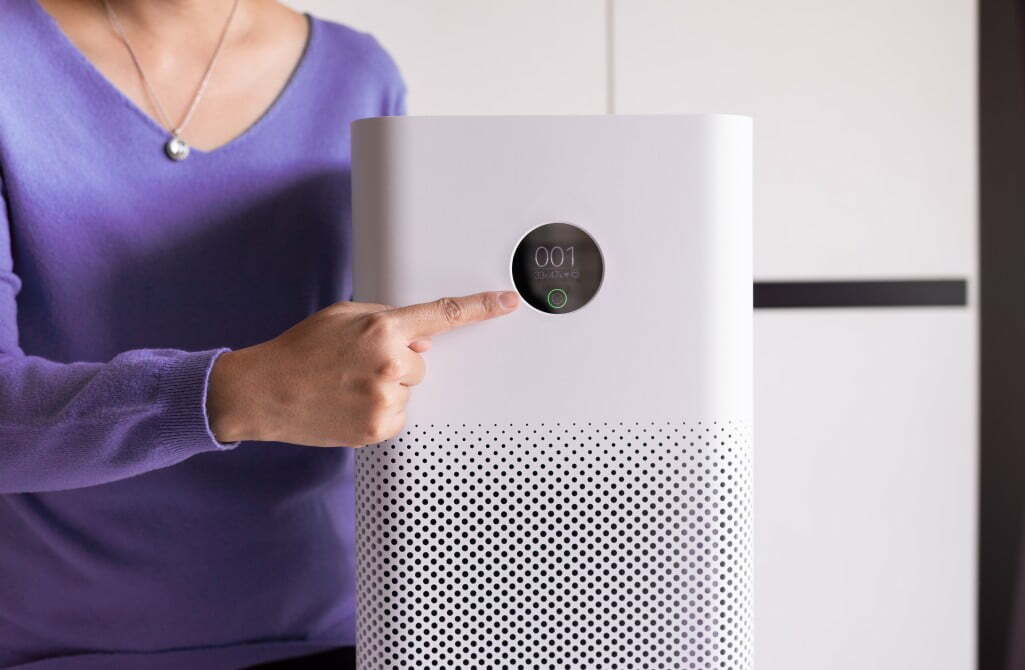
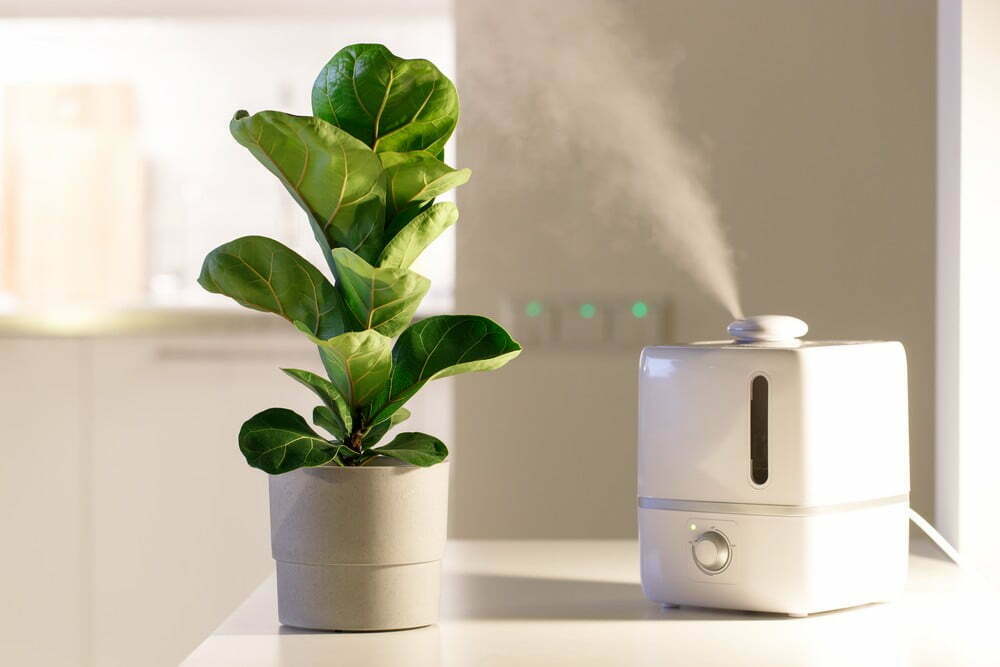
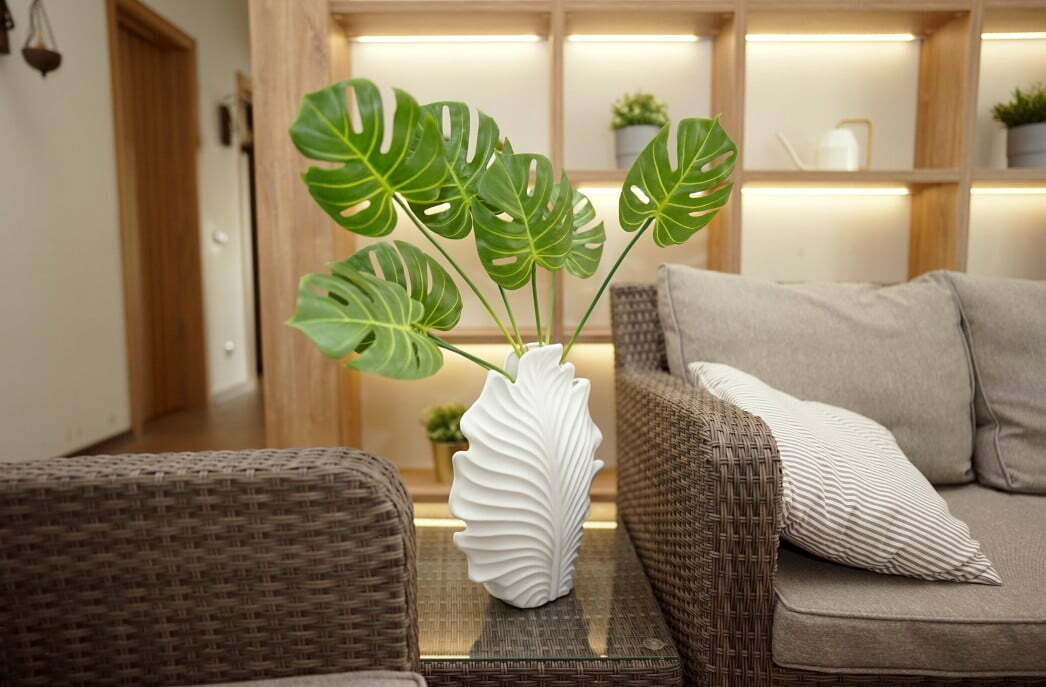
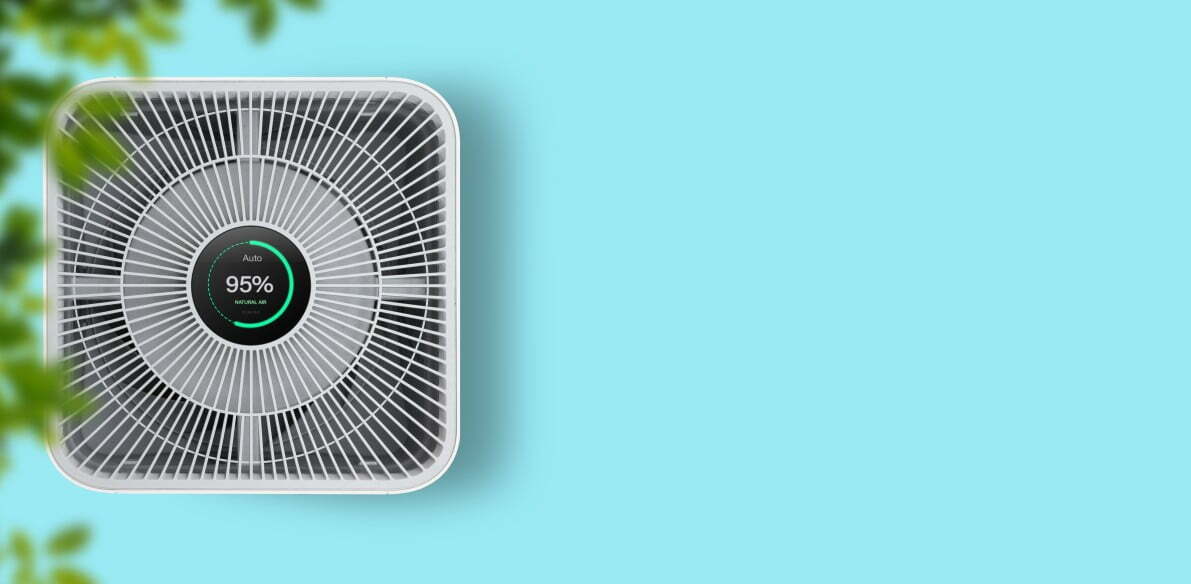
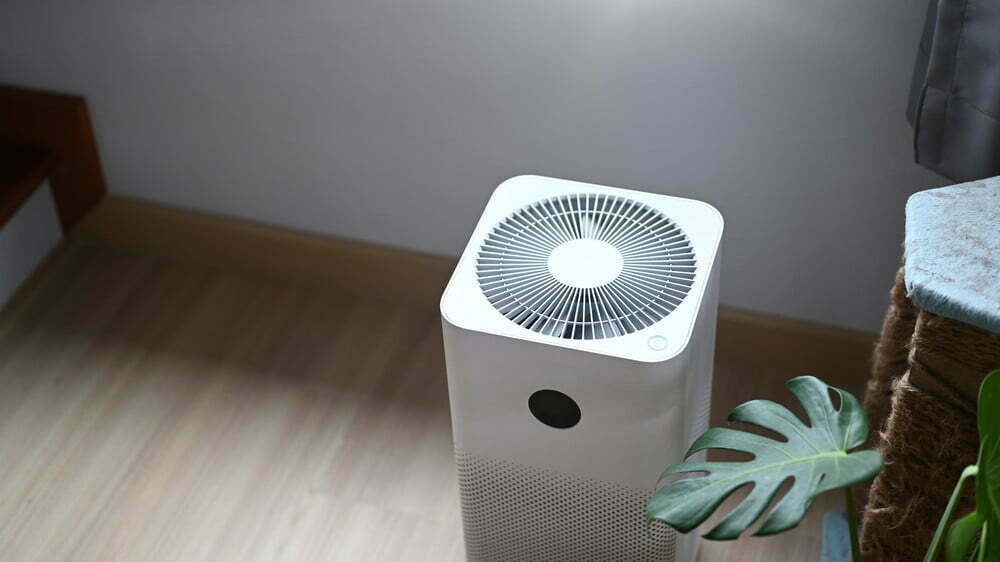
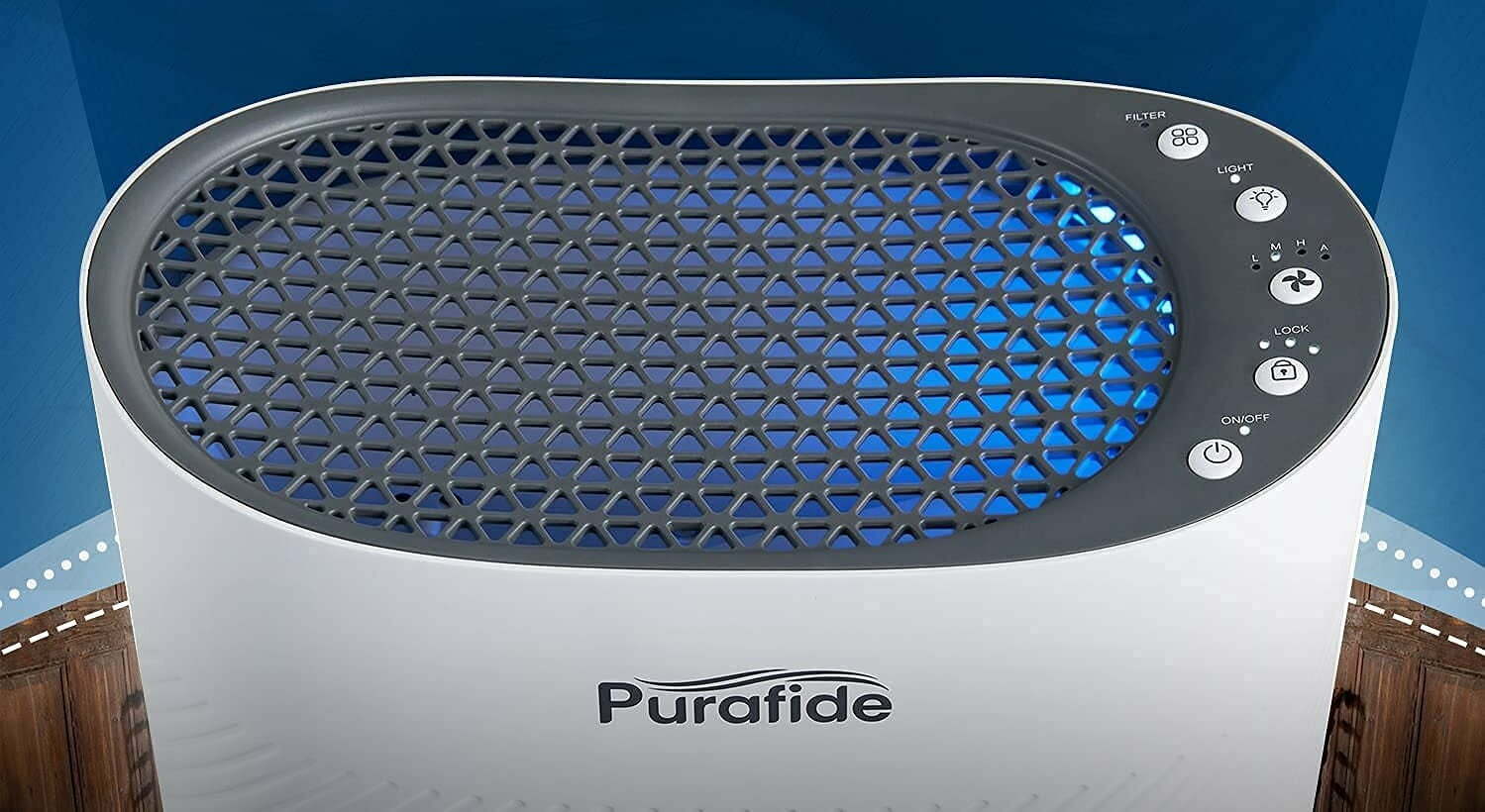
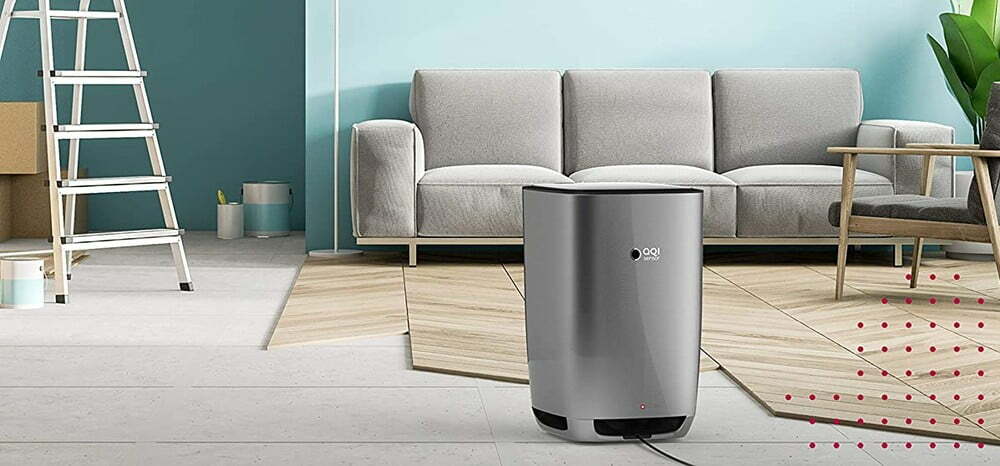
![Best Air Purifiers for VOCs and Formaldehyde in [year] 32 Best Air Purifiers for VOCs and Formaldehyde in 2026](https://www.gadgetreview.dev/wp-content/uploads/best-air-purifier-for-vocs-and-formaldehyde-image.jpg)
![Best Air Purifier in [year] ([month] Reviews) 33 Best Air Purifier in 2026 (January Reviews)](https://www.gadgetreview.dev/wp-content/uploads/Honeywell-True-HEPA-Allergen-Remover-HPA300-e1475603569442.jpg)
![Best Air Purifiers for Dust in [year] 34 Best Air Purifiers for Dust in 2026](https://www.gadgetreview.dev/wp-content/uploads/best-air-purifier-for-dust-image.jpg)
![Best Honeywell Air Purifiers in [year] 35 Best Honeywell Air Purifiers in 2026](https://www.gadgetreview.dev/wp-content/uploads/best-honeywell-air-purifier-image.jpg)
![Best Germicidal Air Purifiers in [year] 36 Best Germicidal Air Purifiers in 2026](https://www.gadgetreview.dev/wp-content/uploads/best-germicidal-air-purifier-image.jpg)
![Best Filterless Air Purifiers in [year] 37 Best Filterless Air Purifiers in 2026](https://www.gadgetreview.dev/wp-content/uploads/best-filterless-air-purifier-image.jpg)
![Best Levoit Air Purifiers in [year] 38 Best Levoit Air Purifiers in 2026](https://www.gadgetreview.dev/wp-content/uploads/best-levoit-air-purifier-image.jpg)
![Best Air Purifiers for Smoking Weed in [year] 39 Best Air Purifiers for Smoking Weed in 2026](https://www.gadgetreview.dev/wp-content/uploads/best-air-purifier-for-smoking-weed-image.jpg)
![Best Quiet Air Purifiers in [year] 40 Best Quiet Air Purifiers in 2026](https://www.gadgetreview.dev/wp-content/uploads/best-quiet-air-purifier-image.jpg)
![Best Desktop Air Purifiers in [year] 41 Best Desktop Air Purifiers in 2026](https://www.gadgetreview.dev/wp-content/uploads/best-desktop-air-purifier.jpg)
![Best Dyson Air Purifiers in [year] 42 Best Dyson Air Purifiers in 2026](https://www.gadgetreview.dev/wp-content/uploads/best-dyson-air-purifier.jpg)
![Best Air Purifiers for Dorm Room in [year] 43 Best Air Purifiers for Dorm Room in 2026](https://www.gadgetreview.dev/wp-content/uploads/air-purifier-for-dorm-room-1.jpg)
![Best Air Purifiers for Office in [year] 44 Best Air Purifiers for Office in 2026](https://www.gadgetreview.dev/wp-content/uploads/best-air-purifier-for-office.jpg)
![Best Air Purifiers for Basement in [year] 45 Best Air Purifiers for Basement in 2026](https://www.gadgetreview.dev/wp-content/uploads/best-air-purifier-for-basement.jpg)
![Best Air Purifiers For Odor in [year] 46 Best Air Purifiers For Odor in 2026](https://www.gadgetreview.dev/wp-content/uploads/best-air-purifier-odor.jpg)
![10 Best Personal Air Purifiers in [year] 47 10 Best Personal Air Purifiers in 2026](https://www.gadgetreview.dev/wp-content/uploads/best-personal-air-purifiers.jpg)
![10 Best Plug In Air Purifiers in [year] 48 10 Best Plug In Air Purifiers in 2026](https://www.gadgetreview.dev/wp-content/uploads/best-plug-in-air-purifier-image.jpg)
![10 Best Whole House Air Purifiers in [year] 49 10 Best Whole House Air Purifiers in 2026](https://www.gadgetreview.dev/wp-content/uploads/best-whole-house-air-purifier-image.jpg)
![10 Best Large Room Air Purifiers in [year] 50 10 Best Large Room Air Purifiers in 2026](https://www.gadgetreview.dev/wp-content/uploads/Coway-Airmega-200M-Large-Room-Air-Purifier-900x900-1.png)
![10 Best UV Air Purifiers in [year] 51 10 Best UV Air Purifiers in 2026](https://www.gadgetreview.dev/wp-content/uploads/best-uv-air-purifier.jpg)
